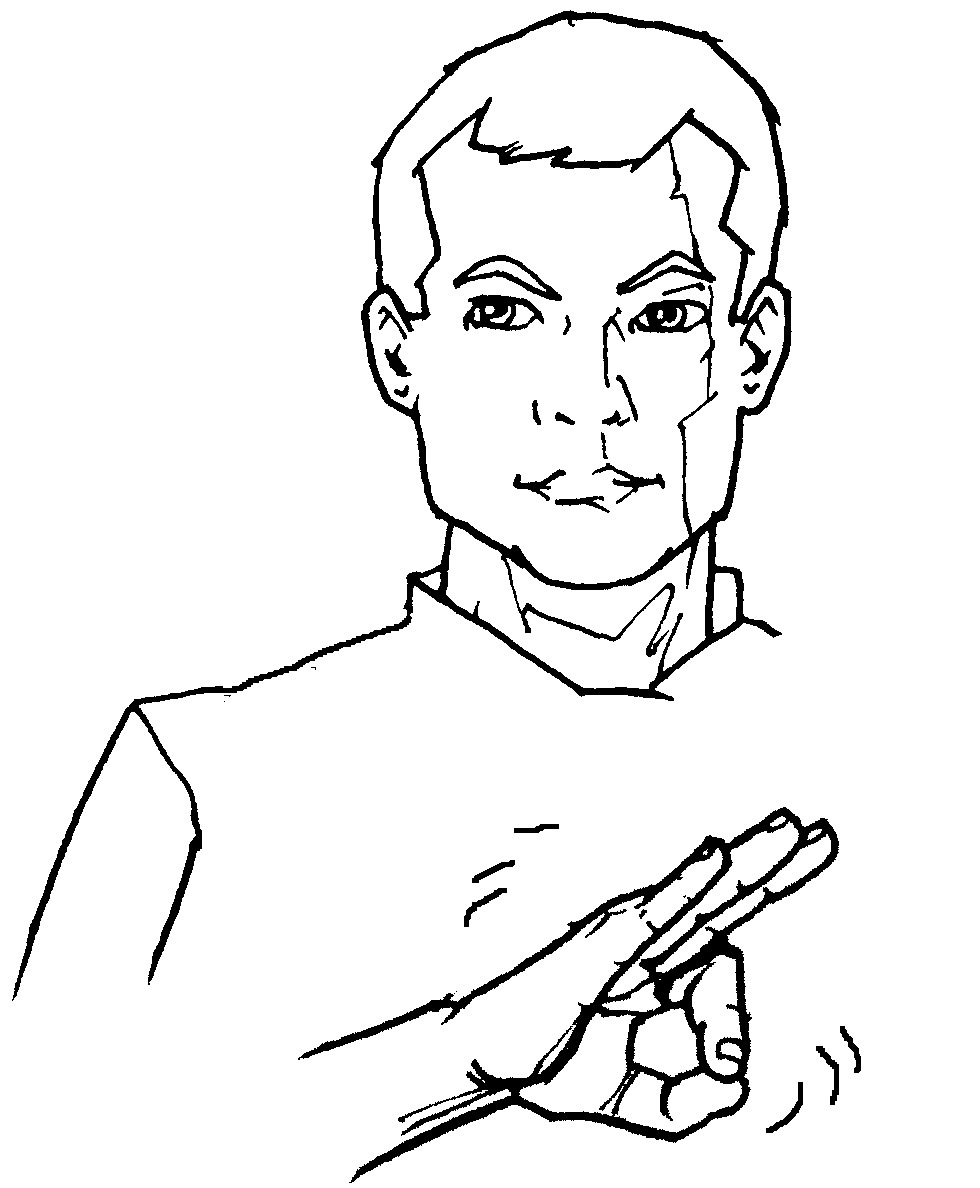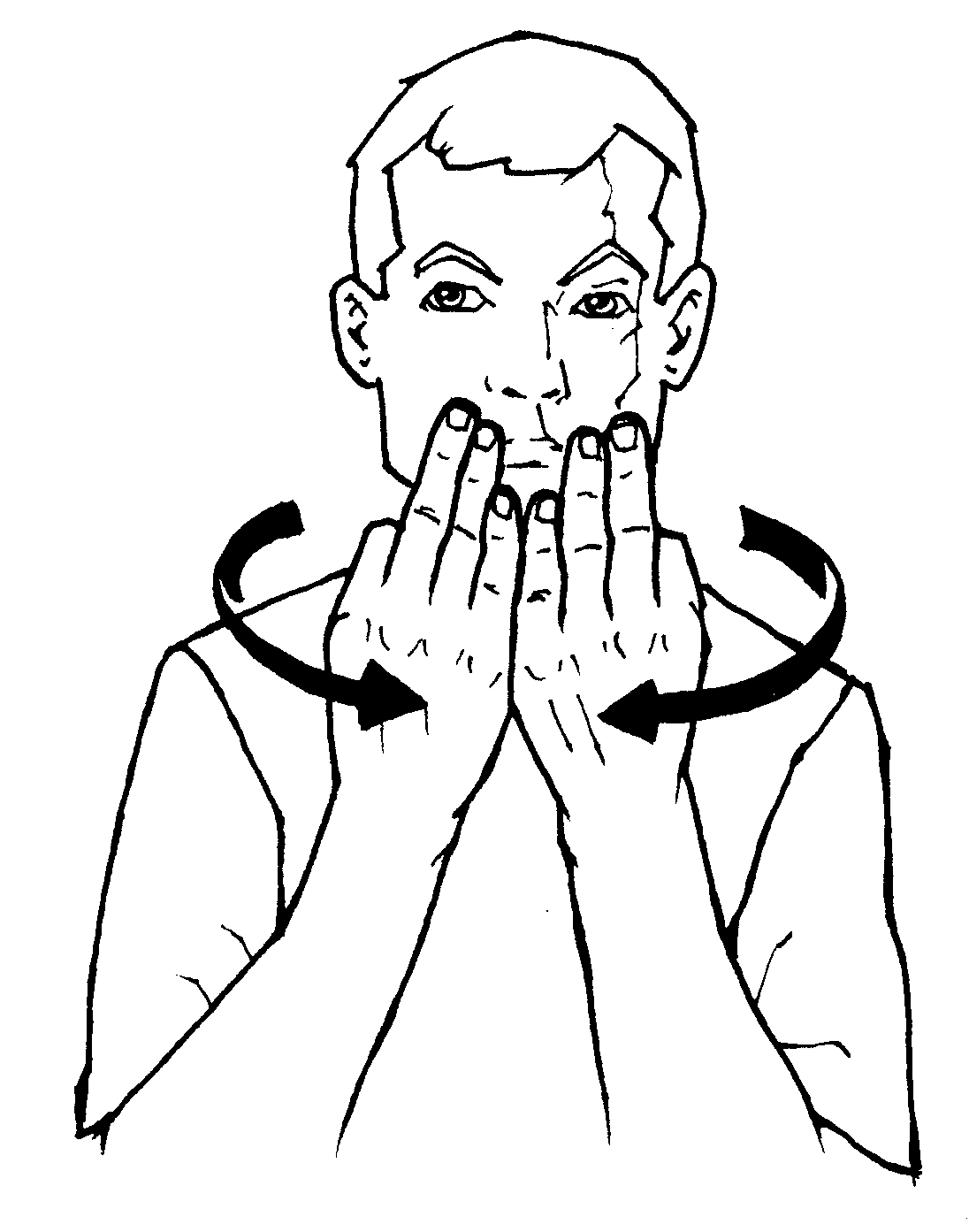Reminder about Initialization in ASL
From Lifeprin, "Dr Bill": More details and examples: http://www.lifeprint.com/asl101/pages-layout/initialization.htm
"
ASL: Initialization / Initialized Signing
Initialization is the process of using the ASL fingerspelled letter that represents the first letter of an English word as the handshape for a sign.
For example, the signs CLASS and FAMILY are initialized signs.
FAMILY:


Warning: Overuse of initialization is frowned upon by the Deaf Community. While it is true that quite a few initialized signs have found their way into general usage in the Deaf community--you would do well to use initialization as little as possible if you are trying to develop your ASL skills. See: "BOOK REVIEW 7"
Hi Bill -
...I am working on a project about initialized signs and I will give a presentation on this issue at Deaf Studies Today! Conference. My title would be Initialized Signs: Analysis of Community Acceptance and Rejection.
Curious .... The list of initialized signs on your website.... How do you determine those initialized signs to be acceptable and are being listed? How do you determine that some other initialized signs seem "unacceptable" and you may not want to include them on the list?I am aware that most of times people usually explain that "these look or feel right" and "those do not look or do not feel right". Mostly based on the gut feeling. That is Ok. I wonder if you have any reasons for listing those specific initialized signs you chose for the website.
...Daisy
Daisy,
Here are some reasons for you:
1. Historical Prevalence: If a sign has a long history of initialization (several generations of usage) it is more likely to be accepted as an ASL sign. For example: FAMILY [Update: Sure, I've seen an "older" non-initialized sign for family. I remember my "senior citizen" friend Ralph signing it. He also did an interesting version of the sign for "DOLLAR" by drawing a circle on his non-dominant palm with his index finger. Yes, there are initialized signs that have "always" (as far as we can tell) been initialized. But that is not my point. My point about the initialized sign for FAMILY is that it is several generations old now. Thus it has been accepted into mainstream usage. ]
2. Lack of existing/alternate ASL form. If a concept has no existing or alternate non-initialized sign an initialized sign is more likely to be accepted as an ASL sign. For example "AUNT." There is no non-initialized specific sign that means "aunt" in ASL. The sign "AUNT" is well accepted in ASL. An example of a sign that is increasingly "not" accepted in ASL due to having a non-initialized competing ASL version is the initialized sign for SINGLE. Instead people can sign SINGLE using a "1" handshape (at the corners of the mouth) or use the version of SINGLE that means "alone / someone / something." Thus "SINGLE" has not one but two competing ASL non-initialized versions. The initialized signs YELLOW and BLUE do not have common ASL non-initialized versions and thus are well accepted. There is a very common non-initialized sign for RED and so the initialized sign for RED is not acceptable.
3. High utility and economy of movement: If a concept is used frequently and the initialized version of the sign for that concept is able to be produced using less effort than the non-initialized version of the sign then it is likely that the initialized sign will eventually gain acceptance as an ASL sign. For example, the initialized signs for BREAKFAST / LUNCH / DINNER are very common in the Deaf world. Part of the reason for this is that doing a one-handed initialized version of "BREAKFAST" is easier and generally faster than doing the two-handed compound sign "EAT-MORNING."
4. Zeitgeist and Social Currency: Sometimes a sign or a version of a sign becomes popular simply because it is marketed and used by leaders or celebrities. For example, the non-initialized version of SYSTEM that is done with a "Y" hand is neither more utilitarian nor more economical than the initialized sign for SYSTEM. However, using the "Y" hand provides a form of self-branding and a way to declare one's membership in the "in" group. The sign for "language" typically is initialized but there are those who advocate doing the LANGUAGE sign with "F" hands (even though it makes the sign less clear for bilingual ASL/English users) as a way of remaining connected to the historical roots of this sign.
5. Political Correctness / Language Borrowing: If a concept is strongly associated with another culture and the sign language associated with that culture uses a competing non-initialized sign there is a likelihood of that sign being adopted into the lexicon of ASL and replacing the former ASL sign. For example: JAPAN. Consdier which adoption rate is higher: the "new" (borrowed) sign for JAPAN or the "new" (borrowed) sign for CHINA? The traditional ASL sign for CHINA is/was done as a non-initialized sign with an "INDEX"-finger whereas the legacy ASL sign for JAPAN was done as an initialized sign. Preliminary interviewing seems to indicate that people are slightly slower to adopt the new sign for CHINA than the new sign for JAPAN. (Some of this may be the proximity of the older sign for CHINA and the location of the sign for FOOD and the fact that "Chinese food" is somewhat more common (in America) than "Japanese food." Initialized-ASL signs are more vulnerable to replacement via language borrowing than non-initialized signs.
Good luck.
-- Bill"
